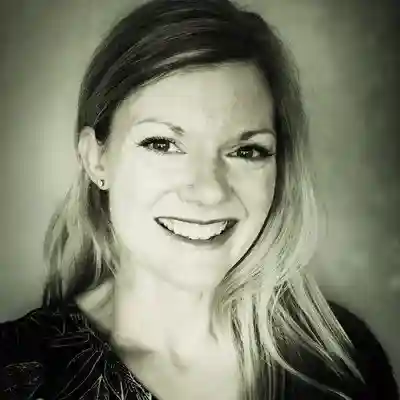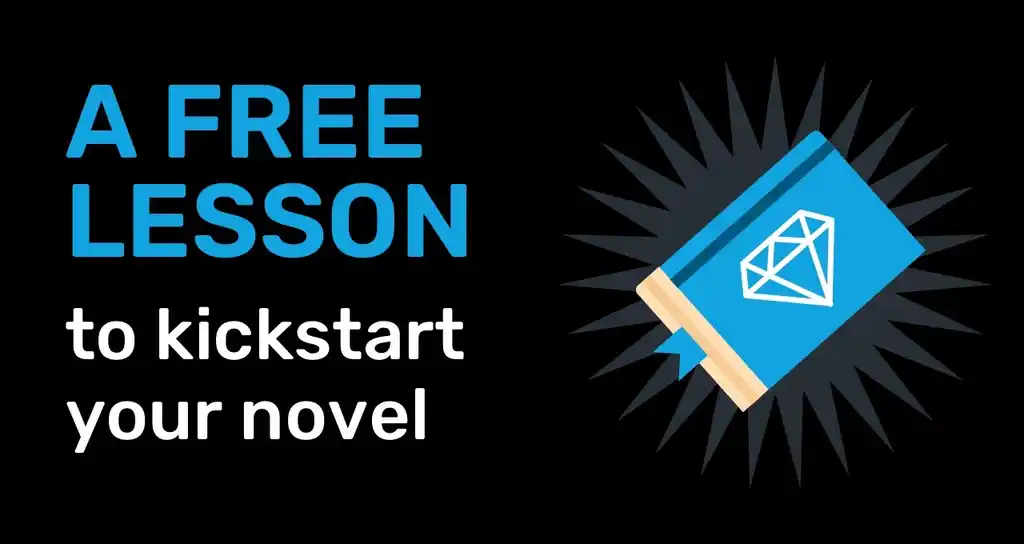A little bit about me
I actually got my start in children's books, I was a bookseller for two years at Joseph-Beth Books in Cincinnati. I always was a reader as a child and when I got into the children's book world, I loved it. I read everything: picture books, middle-grade novels, teen fiction and I did this for two years.
When I moved to New York, I got a lot of offers — and here I thought it was for my fancy education, but everybody told me, "We really would love to have you because you know children's books. You know them inside and out, you know the publishers, you know the authors. You know what's new. You know what customers come in and ask for. You know what gets returned, you know what doesn't sell."
So I got a job offer at Scholastic and I built my entire career there. I loved it. I worked at Scholastic Press which is a small imprint of Scholastic and we do all hardcover. So you're really talking about premier, amazing, big books. And very commercial. And so that's my background.
I love what I do here at Reedsy now. I work with amazing people, helping them from the ground up make and create beautiful, beautiful books. I work on picture books, middle grade novels, and young adults but there's a special place in my heart for picture books. I still read them to my boys — the oldest is 17 and my youngest is nine.
Now I'm going to go over eight common pitfalls — things that just aren't always apparent right away when you're just sitting down at your desk writing a picture book. I want you to be able to see them in your own work and address them by yourself.
I am going to be talking about manuscripts for people who are hoping to get published traditionally by a publishing house. Your end goal is to be able to submit your work to a literary agent or to editors at a publisher.
You want to have something you're very, very proud of and something you feel strongly about. So that's what we'll be talking about.
A quick note about age categories
So the standard picture book age category which a lot of people don't realize is ages four to eight. I get children's book manuscripts all the time where people say, "This is for ages two to fourteen." There's no such category. That category does not exist, erase it from your mind.
Ages four to eight is something that booksellers use. Amazon uses it as a way to categorize your book so that a consumer can go to their website or walk into a Barnes & Noble, and find your picture book. That doesn't mean that a two-year-old can't enjoy your story or that a ten-year-old can't either. But what I'm really talking about is that solid category, it's huge. That's where most of your picture books are going to fall.
I'm not really talking about concept books, books for babies. Also, I'm not really going to be talking about picture books for older kids. Complex non-fiction sort of falls into this category. But don't think of the age category as limiting your book — it's really just a marketing tool.
Mistake #1: Getting your manuscript formatting wrong
I get all kinds of funky formats. If you're submitting your book to an agent or an editor, they have so little time to read your manuscript. If your manuscript isn't clean, if it isn't easily readable, they're just not even going to bother. They're very, very busy as I'm sure you realize. So you want everything to just look nice, neat, and clean. And this isn't going to look great but I'm going to try my best here.
So again, simplicity. This is what a manuscript should look like when it comes to me. 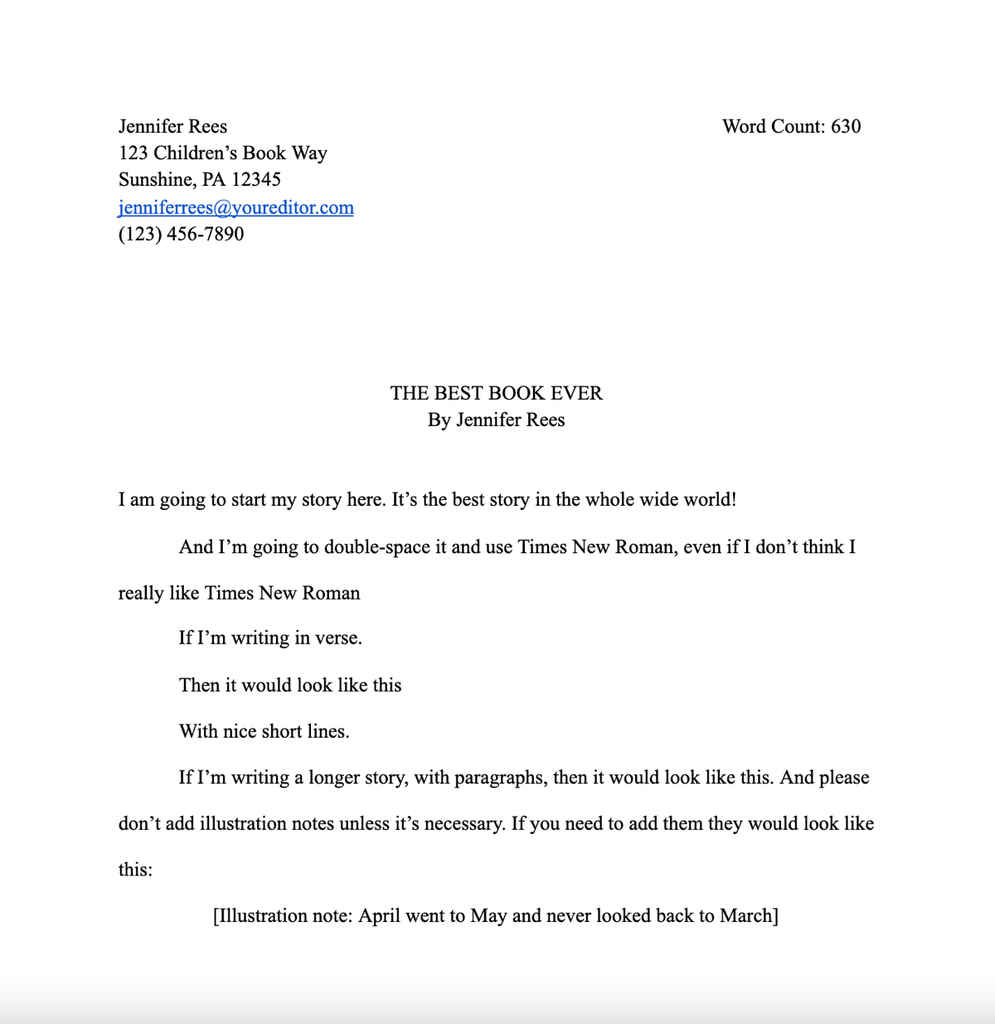
You want to have your contact information in your left-hand corner.
In your right-hand corner, you want to have your word count (that’s very important).
I like to put the title in caps — I just think it looks very nice.
And then you come down a little bit more and you just start your format. You want a really clean, readable font. I like 12-point Times New Roman. You also want to double space your manuscript.
Don't try to emulate picture book page turns.
Sometimes I get a 50-page document, I'm like, "What is happening?" Because somebody's taken one line and put it on one page and then on the next page there's another line. And what ends up happening is that your editor or your agent's not going to read that because it's too long. They're just going to say, "What's happening." So you just want a nice, clean, simple format.
Don’t paginate your manuscripts.
Picture books are very specifically paginated, the stories don't start on page one. You have a title page, endpapers, a copyright page — but you do not need to indicate what goes on which page. An editor just wants to read your story. If you try to number your pages, it's just going to look really amateur. The agent or editor will look at your manuscript and think, "This person doesn't really know what they're doing."
When your manuscript hopefully gets sold or bought by a publisher, you have a whole team of people dedicated to figuring out your page turns for you. You have a design team, an editor, and your illustrator. And so that should just be a nice load off your mind, you don't need to worry about it. All we want to do is read your story.
FYI: Most picture books fall into the 32 pages category. I get a lot of manuscripts from people who say, "My picture book is 72 pages." And that's much too long. (I'm going to talk about word count in a little bit.)
Mistake #2: Getting your book illustrated
This is huge. People hire me and say, "I'm not an illustrator but my friend illustrated this book for me and it's ready to go." Or, "I hired somebody and I have illustrations." If you're somebody who only writes manuscripts, please do not get your picture book illustrated. You're only going to waste money.
I'm sure you all have great design sense but I have seen some really, really terrible outcomes. What happens is that you send this picture book off to an agent or an editor, and they see the muddy illustrations (or that it’s just not very satisfying) and they're just going to pass on it.
That's the truth — but it should be another load off your mind. If you're not an illustrator, don't find them, don't try to do it yourself. Just work on your story, work on your craft.
Publishers have their own illustrators
Publishers want to look at your manuscript and find somebody who's exactly perfect for that story. They have a whole entire design team dedicated to doing this. If you are an author-illustrator and your goal is to illustrate your own work (and you are actually someone who can illustrate) then you want to submit your manuscript along with some art samples.
Keep your illustration notes to a minimum
Everybody thinks they have to have illustration notes all the way through their story. As I said already, the editor or the agent doesn't have a lot of time. They don't want to read your illustration notes unless it is absolutely crucial to the understanding of your story. You don't need to say, "The grass was green and the leaves were blowing and the house was red."
I mean, everybody understands you're going to have illustrations in your stories, so you don't need to say those things. If you have the character who's going along about her day and, unbeknownst to her, she drops her keys — and the story hinges on her losing her keys — then yeah! Add a little illustration note.
[Illustration note: Violet drops her keys.]
Short and sweet, very simple, but try not to use them is really what I recommend.
Mistake #3: Too many words
So picture books of yesteryear were nice and long and they went on for days and days. Nowadays, nobody has patience anymore — I am certain it's due to our technology. Parents are exhausted, kids are exhausted. Parents don't want long picture books. I'm a parent of three boys I have to say that sometimes I agree with that!
If I get a manuscript that's 1,500 words, all that says to me is that you do not know your market. You cannot send a 1,500-word picture book to an agent or an editor — they won't even consider it because you clearly have no idea what's selling right now.
The shorter the better: I would give you a range of about 500 to 800 words. 800 words really being the top. You'll hear different things. I’ve heard some people that say under 1,000 is fine. I work for a lot of literary agents, I do a lot of reading and editing for them. And if it's over 600, it’s a "No." Because they hear it from publishers over and over again: they don't want long picture books.
So of course, there are some exceptions which would be if you're doing something non-fiction or something for older children. With more complex content, that puts you in a different category and you really don't need to worry so much about your word count.
But it really doesn't matter so much how long your work is: if it's reading long, it's too long. That's always the goal — for your work to not be reading long, not to be feeling slow at any point. To not say in too many words what could be said with less
This is the new dawn of the picture book, to be really short and depend a lot on illustrations (which, again, is why you shouldn't do them yourself).
Mistake #4: No ‘hook’
I see a lot of books that have absolutely zero (and I mean zero) hook.
This is the thing that gets readers interested in reading your story — what gets the agent to want to check out your book. Your story must have a hook.
Think of it as a two-sentence description of your book. Some people call it an elevator pitch. If you need to describe your book to somebody in two sentences, how would you do it? Does it sound exciting? Is it something that makes somebody perk up? If you cannot do this with your story, it means you don't have a hook.
Example 1
Time for some show and tell. So somebody says to you:
"I have this great book. It's a story about a girl who loves the color pink."
Well, you could say, "Oh, that sounds really nice," if you're being nice. Or you could think to yourself, "That sounds kind of boring." Who doesn't love the color pink, right? So your story doesn't have a hook, that's not a hook.
On the other hand, you could say,
"This is a story about a girl who doesn’t listen to her mom and eats too many pink cupcakes. And she turns pink because of it."
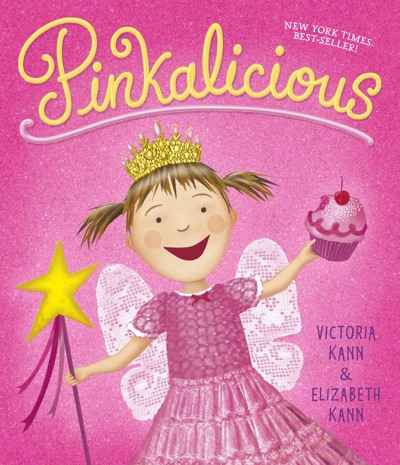
So of course, Pinkalicious is a book which a lot of you probably know. Great hook, just super fun. So you can see how we turn something kind of boring into something exciting.
Example 2
My boys love this next book, I can't tell you how many times I’ve read it. I probably know this book by heart. Okay, someone says to you:
"I have a great story. This story is about a boy who visits the zoo and he sees all the different animals. And I'm going to go through and describe all the animals to you."
Well, this is not too exciting honestly. Not commercial. Nobody's going to buy it. But you can say:
"This is a hilarious story about a boy whose class goes on a field trip and gets eaten by an anaconda."
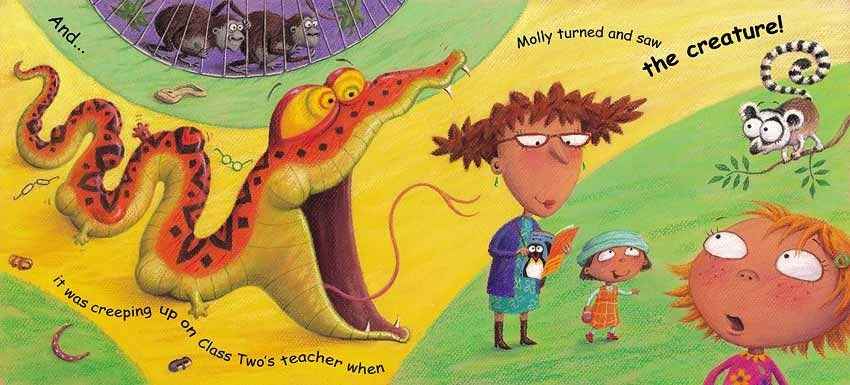
Awesome, who can't love that? That's this book, Class Two at the Zoo. And it is so funny, so hilarious.
So the whole class goes on a field trip, they don't see the anaconda it's in the background and it eats all the kids and the teacher one-by-one. And they're all inside the anaconda and then a little girl comes along and she rescues them. Then at the end, the funny surprise is that a little boy who's not in their class pops out too.
Example 3
Okay. I'm going to do one more. So someone says to you:
"I have a great idea for a story, it's a story about a pigeon who decides to go sightseeing."
Well, it sounds like maybe it could be interesting but I'd need a little bit more to peak my interest. So this is what I would say. I'd say:
"This is a story about a pigeon who wants to drive a bus. And will you let him?"
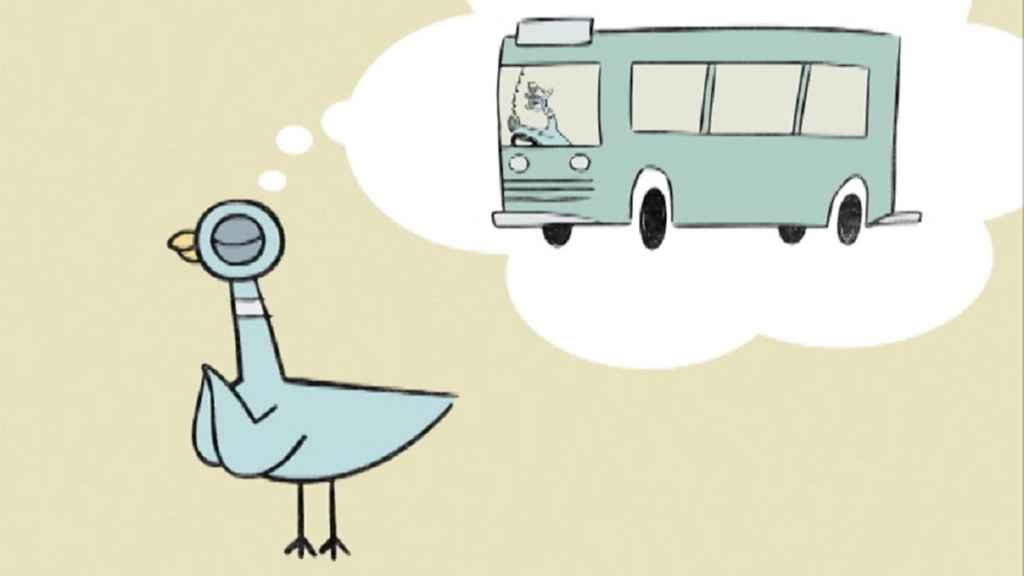
And of course, one of my favorite books is, Don't Let the Pigeon Drive the Bus by Mo Willems.
So those books all have hooks. If you study picture books, you should ask yourself, what's the hook here? Get really good at doing it because this is what you need to do with your own work.
Mistake #5: No Plot
This is related to the hook but it's a little bit different. It’s a big mistake if your book has zero plot — and I mean zero. Your picture book needs to have a plot. It can't be just lovely language and ruminations on nature. Nobody will buy it — that kind of stuff has been done already.
Again, we are thinking commercially: we want things that are exciting, things that will sell.
Your plot needs to have what we call a story arc: a clear beginning, middle, and end.
I'm not going to go too deeply into this because it could be a whole talk in and of itself. There are a lot of resources dedicated to this but in a nutshell, your story basically can't go on and on without a plot. Things need to happen so that you have a beginning and a middle leads you to a really satisfying resolution. Each sentence must move you forward in an exciting and satisfying way.
There are tons of approaches to plot but I’m going to give you three of my favorites that are really great for picture books. If you're having an issue figuring out the plot of your story, you could maybe think of one of these three things.
Character growth story
This is where you have a character who starts out with a problem or something they want to solve or accomplish. Through the arc of the story, they try some different things, they don’t get it right and then they try again — and then they get it. It might not be the resolution they expected they’ve solved a problem and they’re different in the end. They’ve experienced growth.
We also want to see our characters experiencing growth because otherwise, I'm not sure that there's too much of a point.
Grumpy Bird by Jeremy Tankard. A Scholastic book that was published while I was there. Grumpy Bird is super, super grumpy and he doesn't know why, he just is. He goes through his day and you see him becoming less and less grumpy and there are reasons why. At the end, he's not grumpy anymore but he had to make a change of heart in order to do that. It's just a really lovely, fun story.
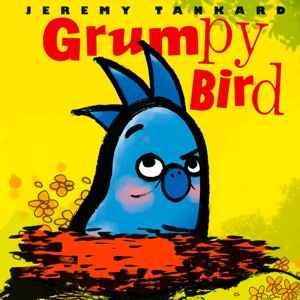
Fun romp with twist at the end
Kind of Class Two at the Zoo is a great example of a growth story. And it has a fun plot twist at the end.
Bark, George by Jules Feiffer. So George is a dog. His mom says, "Bark, George." But he meows and then he does a duck noise — he just can't bark. And the mother’s like, "What's wrong with my son?" So they go to the vet and the vet reaches into George and pulls out a cat, and then he reaches in and pulls out a duck. And it's just this really fun, hilarious story and the end is really satisfying to and gives you a surprise.
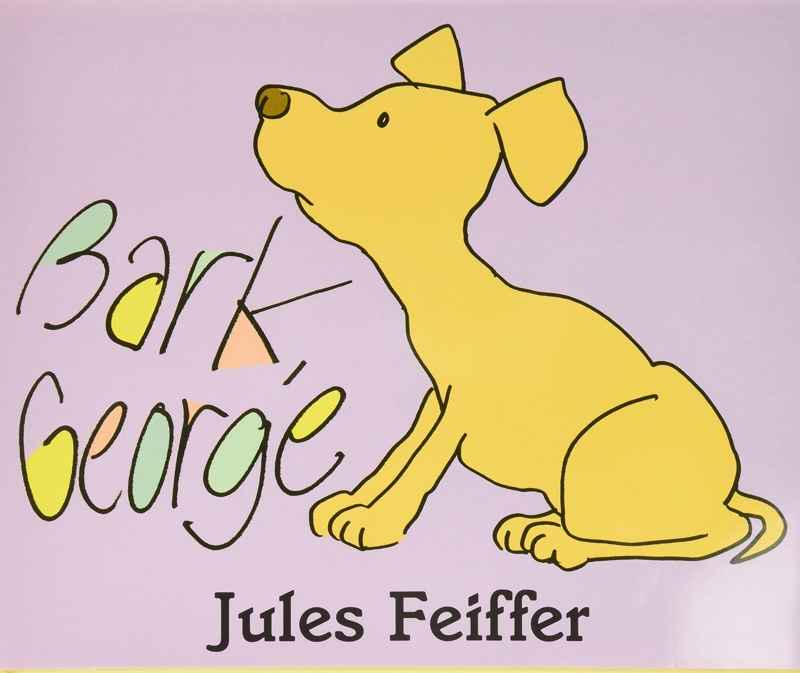
Nonfiction story
I think non-fiction is underrated, my boys love, love, love non-fiction. They always have. With picture books, a lot of people are under the impression you have to write fiction. If this is you, challenge yourself to try non-fiction.
It has to be really fun and it has to be different. It needs to have a unique angle on a topic that maybe has been covered before.
What if You Had Animal Teeth? My boys loved this book. It's not a story so much as imagining if you had teeth of a cobra, or a giraffe, or whatever. And what would that mean for you? Then it gives you fun facts about all those animals.
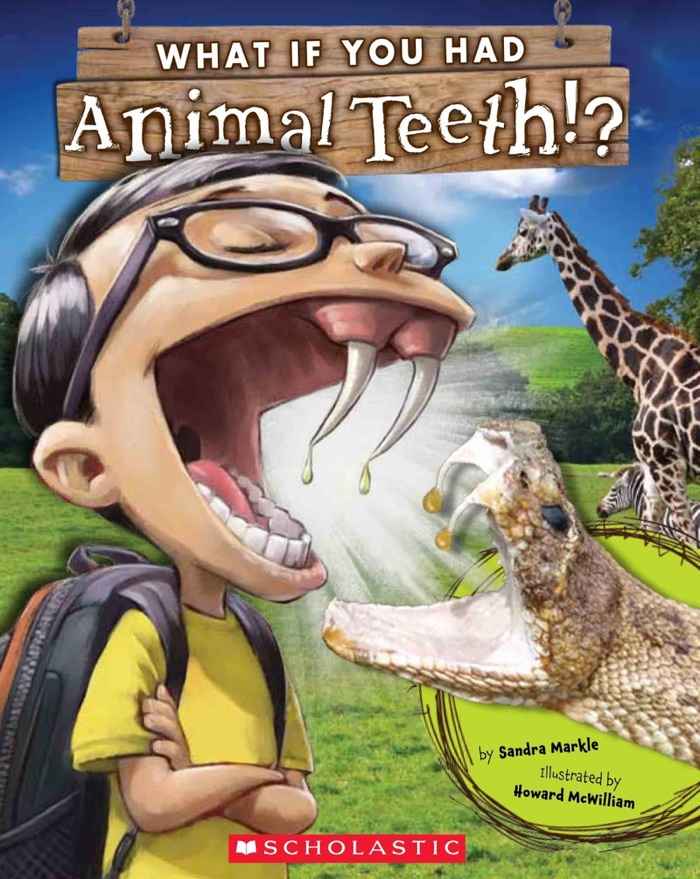
Mistake #6: Not knowing your audience
This is coming from a commercial publishing background. What are publishers looking for in a commercial picture book? Well, they want something that is going to sell — so you need to think about who buys picture books.
Parents buy picture books. Parents buy a lot of picture books. Teachers buy picture books, a lot of them. I’m sure there are other people who buy them but those are really the main two categories of who buys picture books. They're buying them for their kids, they're buying them for their classrooms. Schools are buying them for their libraries.
So what do parents and teachers look for?
Entertainment. Pure entertainment. There's nothing wrong with entertaining readers. Don't Let the Pigeon Drive the Bus is a perfect example of just something that's just super, super fun.
Something that teaches lessons. Think about kindness. Being proud of being different. Books that teach lessons without being didactic are definitely something that parents and teachers are interested in. Especially kindness, these days.
Things that are a little familiar. Parents and teachers look for authors that they already know and love. So you say, "Well, how can that help me?" Well, look at those books and figure out what are they doing. What are they doing right? What do you like about them? Can you put a spin on something? Could you think about Pinkalicious and find a way to emulate it somehow? Could you make it different? Could that inspire you to think about a new idea? New ideas are always super exciting.
Non-fiction. Parents and teachers are also looking for non-fiction. Any kind of knowledge, history, science, anything like that is just huge. So again, don't overlook non-fiction.
Concept books. Potty training, new brother and sister, new life situations. Any kind of life situation really.
Milestone books. Books about birthdays or first days at school, for example. It's Hard to Be Five by Jamie Lee Curtis is such a lovely, fun book. All of my boys loved it they just thought, "Wow. She really gets me — that being five is not always easy."
Seasonal celebrations. Holidays and the marking of something important.
Also, I want to say, don't forget humor. All my boys loved to read but with the more serious stuff, they were like, whatever. If it was funny, it held their attention. Funny, humorous picture books really do hold the attention of the reader, so don't forget your humor.
Mistake #6. Terrible rhyme and words kids don’t understand
Do not think that children's picture books need to be in rhyme. There are so many gorgeously written picture books that do not rhyme but they just sound beautiful. Someone has really paid attention to how the lines read and how each and every single word sounds when you read it out loud.
So often, I get some really sing-songy stuff that forces the reader into a rhythm that people think is fun — but in truth, it just drags on.
I see a lot of really forced writing. I can see that you're trying to make that end rhyme work, so you come up with these ridiculous words that make no sense. And contextually make no sense at all. So rhyme is best avoided unless you are really great with it. I have a lot of clients who are terrific at it, and I say, "Well, go for it." If it sounds great and you're doing a good job with it, let's do it.
Parents don’t want to keep explaining things
So another thing I see a lot is, is language that kids can't understand. I find myself telling authors that a kid won’t understand this word, but they’re also not going to understand the context of this whole situation.
The argument I always get back: "Well, they're reading with a parent aren't they?"
Yeah, they are. But do you think a parent wants to take time out to stop and explain a situation? Your story really needs to speak to the child and not rely on the parent or teacher to explain things. It's tricky to know, especially if you don't have children or if your child is a different type of reader but that's when you really want to rely on your editor or somebody who does know kids who can say, "This is just going to be too tough for kids."
Mistake #7: Other general pitfalls
Sometimes I see manuscripts that just make me think, "Oh boy. We need a hook." And that goes back to the hook.
It can be a dry and boring topic and actually. I'm going to show you a book that my boys really love [Poo: A Natural History of the Unmentionable by Nicola Davies].
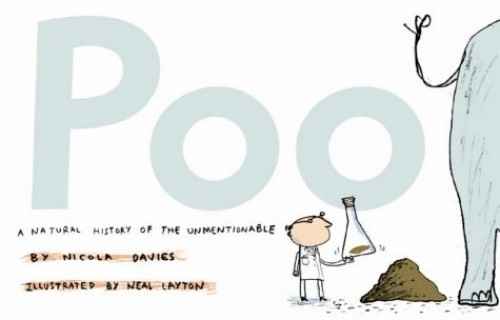
It cracks me up every time, who would've thought? It goes through all these different animals and [looks at their poop]. It's quite good actually. It's the funniest book, my boys love it, they think it's awesome. It’s done really well, and it's really funny.
So if you do have a topic that seems like maybe it might be difficult, think about your hook and how you might make it interesting — because everything is interesting!
Market oversaturation
Pug books, for example, are really, really popular. Everybody decides to write one and then we end up with too many. By the time you actually get yours edited and sent to the publisher, they've already published their Pug books and they're not going to consider yours.
You need to think, "Well, what else hasn't been done? What else can I do?"
COVID. I mean yes, we all want to address it. We all want to write a book about what we’re all going through it. But I can tell you right now that if you're writing a COVID book and trying to send it out, it's going to be a very difficult sell because I'm pretty sure they've already come out with the ones that they want to publish.
Mistake #8: Leaving your query letter to chance
Your query letter is almost as important as your picture book manuscript. This is where you're selling yourself.
Sell yourself
I see a tonne of query letters that are totally boring — just here's my story! This is an opportunity for you to sell yourself. It's almost like a job interview. You're saying, "This is my story, this is what it's about, here's my hook. Here's something about me that I want you to know."
Personalize your queries
Besides being really boring, I often see queries that aren’t personalized to the agent or to the editor. That's a big mistake. You don't want to just send off 200 query letters. I mean, you could but I think that agent or editor who's so, so, so busy wants to know, why are you sending me your story?
- Is it because I have an author that you like?
- Is it because I published a book about a strong female girl and you have one that you think I would like?
- Or maybe you've read on a blog that I love funny books, are you going to send me a funny book?
You really want to know who you're sending your stories to. It takes a tremendous amount of research — I am not even going to lie about that. It takes a lot of work but it's worth it.
Hook before plot
The other thing I see in query letters is too much plot. It's not about plot, it's more about your hook. So you want to highlight your hook.
And those are my eight mistakes!
Bonus tips!
Study picture books
I get a lot of picture book manuscripts from people who have never gone into a book store — and they don't browse Amazon. They don't buy picture books, they don't read them, they don't know them. They might remember something they read to their kid 20 years ago but that’s it.
Studying picture books is enjoyable, it's really fun. And the only way to know how it's being done is to actually read them. I'm sure most people are already reading them but if you're new to this, make it a fun project and just start reading picture books left and right. It's one of the best things you can do for your education.
See which ones work, see which ones maybe you think don't work, and read them out loud! Picture books are meant to be read out loud so please read them out loud. It will just teach you a lot about the market too.
Believe in yourself
All these authors I used as examples today, at one point in time never had a picture book published. I know a lot of people worry that they’re brand new and nobody’s going to look at them. But everybody started out as a debut author and publishers are always terribly excited to have somebody who's brand new and very talented.
Know what publishers are looking for
Here are some things that I think publishers are looking for right now:
- Diverse stories. That's very hot right now.
- Stories that challenge norms and traditional ideas about the way things are supposed to be. That's pretty big too.
- Girl empowerment. Strong female characters.
- STEM and science are still pretty big.
- Unicorns and other magic. Not magic like Harry Potter magic but stories that have magical elements. They really capture the curiosity of kids.
- Characters with mega personality.
- Dog books. Who doesn't love a dog book?
- Dragons. Dragons are always big. But think cute and sweet and funny and not scary.
- Laugh out loud humor.
- Non-fiction. Especially little-known historical figures or events.
Get an editor
If you can afford it, it's definitely worth it to hire an editor. I have never worked on a story that has remained the same — it has always gone through an incredible transformation and not just because I'm an editor but because of the communication between me and the writer. And seeing kind of what the holes are and what needs work. It's really worth it to have somebody with an outside point of view, with experience in the children's book world to look at your story for you.
Be open to change
If I get a sense from any author that their story is the way it is and they don't want to change anything, I won't work with them. Because it's probably fruitless, I'm not sure you and I could work together — every story I've ever worked on, even at Scholastic with seasoned authors has gone through a huge change.
Have other manuscripts in your back pocket
I would have more than one manuscript before you try to get published. Say you’ve been working on one story. You send it out all over the place and someone gets back to you. It's an agent, and they say, "I really like your writing, but I already have a story exactly like this. What else do you have?"
And then people freak out, email me and say, "I don't have anything else, what am I supposed to do?"
Well, if you have four or five picture books you feel confident about, you can send another book to that agent. And it just is a lifesaver.
Bonus resources
Society of Children's Book Writers and Illustrators. I cannot recommend this organization enough. They're global and in the US, they are in every state — sometimes with more than one chapter in a state. I'm a member here in Pittsburgh, I think it's $60 for a year. They host events and it's a great resource for writers, for new writers especially.
Publishers Weekly. They have a free newsletter called Children's Bookshelf. Definitely sign up for it. It comes out every Thursday. It's publishing industry news so you'll get updates on children's books every week and it's such a great teaching tool.
Reedsy. I'm just so impressed with everything that they have. The resources are incredible.

